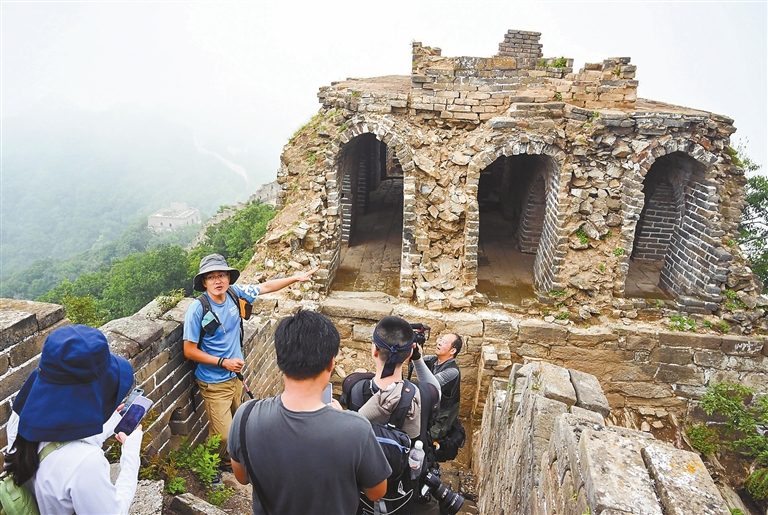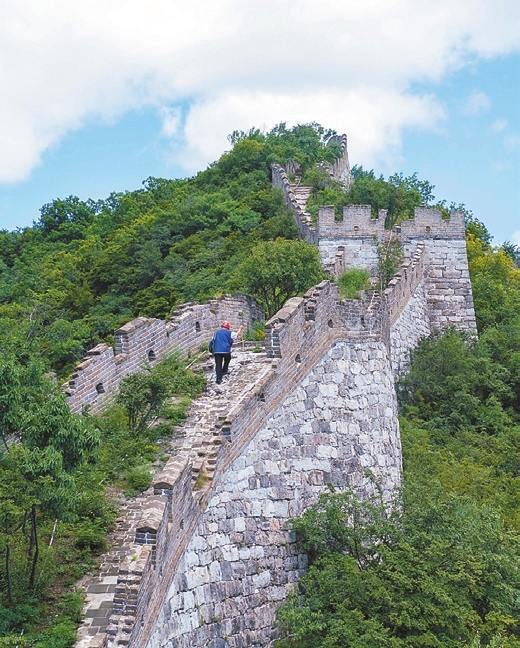

THE 2022 Beijing Great Wall Cultural Festival kicked off at Gubei Water Town in Beijing last Saturday, revealing the results of the Great Wall conservation efforts. The town in Miyun District is on the foot of the Simatai section of the Great Wall, one of the best preserved Ming Dynasty (1368-1644) sections. Ever since 2018, the pilot work of introducing archaeological excavation methods to the protection and repair of the Great Wall has been carried out through projects such as renovation and research projects along the Dazhuangke and Jiankou sections of the Great Wall in Yanqing and Huairou districts. Additionally, there are currently 17 Great Wall protection projects under way in Beijing. “We are making protection of the Great Wall a top priority,” said Bi Jianyu, director of the Heritage Division of the Beijing Municipal Cultural Heritage Bureau. Interdisciplinary research and digital innovation are two other creative facets fueling China’s efforts to conserve and promote the Great Wall culture. Chen Mingjie, director of the Beijing Municipal Cultural Heritage Bureau, said that through close cooperation in fields such as materials science, structural mechanics and botany, they are promoting a new mode of conservation and repair of the Great Wall. China’s leading digital giant Tencent has also been contributing to these efforts through the online project “Yunyou Great Wall,” which enable users to “climb” the Great Wall on their mobile devices. The project marks the first time that an immersive and interactive digital restoration of the Great Wall has been presented through cloud technology. Other digital conservation efforts include collaborative research with Tianjin University to establish a three-dimensional database. Additionally, the Great Wall Environmental Vibration Disaster Cloud Monitoring Technology Library was co-launched with the Beijing University of Civil Engineering and Architecture. “Such digital conservation efforts are important for promoting the culture overseas without being limited by geography or cultural differences. Also, they are important scientific attempts to preserve ancient Chinese culture for our future generations,” said Xu Suming, a cultural relic expert. The Beijing Great Wall Cultural Festival will include visits to the Great Wall as well as Great Wall-themed photo exhibitions, an antique market, the Gubei Great Wall temple fair and other cultural activities. “To guide the public from ‘looking at attractions’ to ‘experiencing culture,’ the festival has become an important means of enhancing people’s sense of happiness and fulfillment,” Bi noted. Moreover, a new scenic route called the Jingji Great Wall has been introduced at the festival. “Jingji” refers to Beijing and its environs. The 400-kilometer-long scenic route binds various Great Wall sections spreading across Beijing’s six districts: Mentougou, Changping, Yanqing, Huairou, Miyun and Pinggu. Liu Bin, deputy director of the Beijing Municipal Culture and Tourism Bureau, noted that the project is a symbolic part of the establishment of the Great Wall National Cultural Park, a national-level park set to be completed in 2035 to promote China’s Great Wall culture. “The launch of the Jingji Great Wall scenic route means that in the future, we will not only protect the cultural heritage itself, but also pay attention to the overall landscape around the Great Wall, which will further expand the subjects of the Great Wall’s conservation and make the scope of the research work more comprehensive,” said Shang Heng, a researcher at the Beijing Archaeological Research Institute. (Global Times) | 
